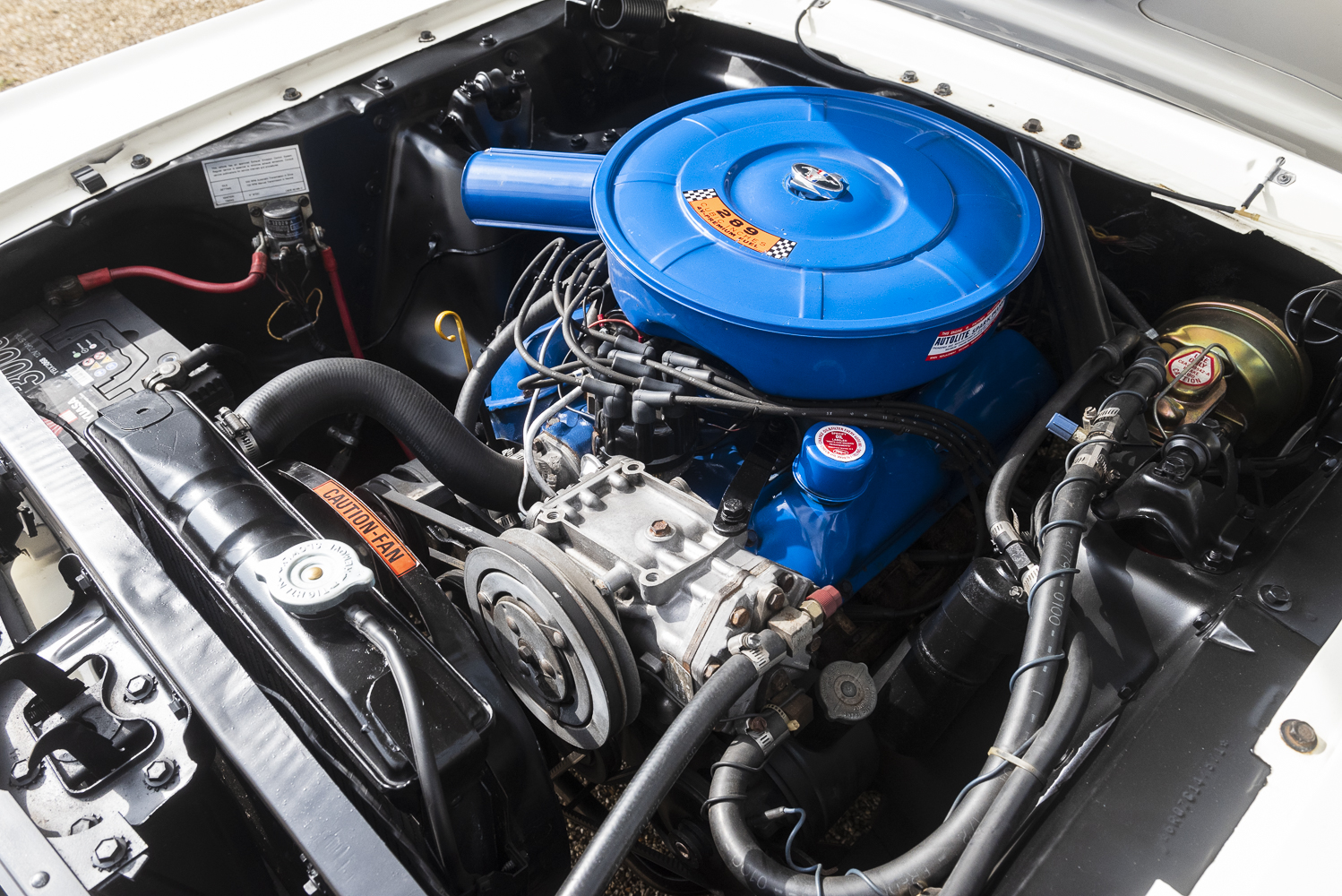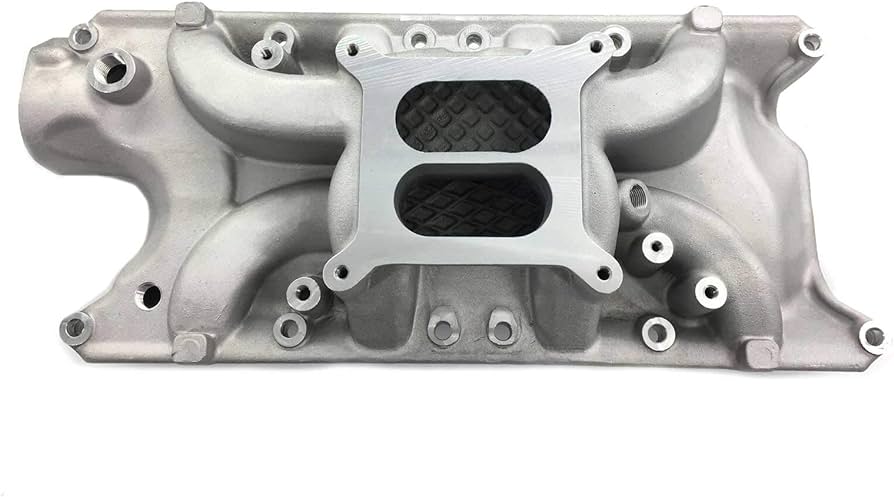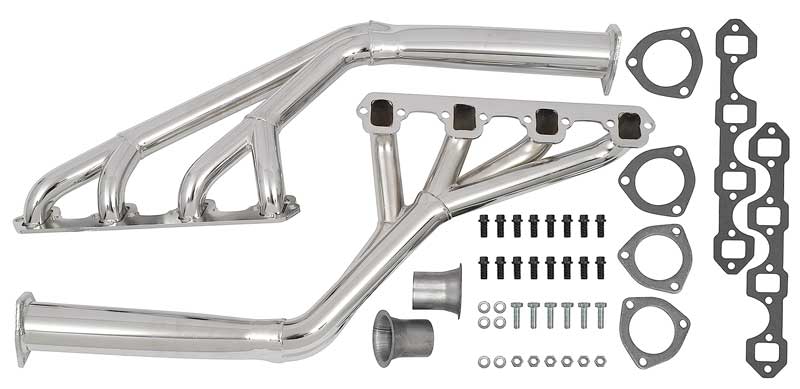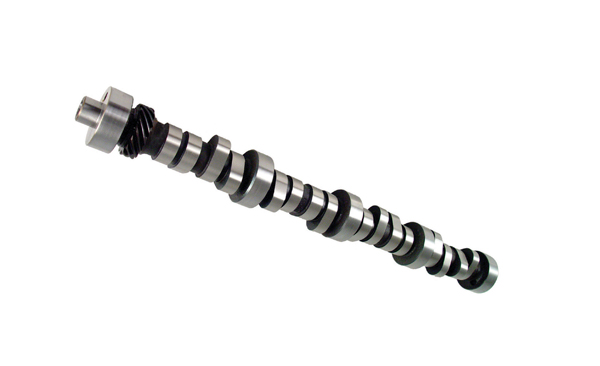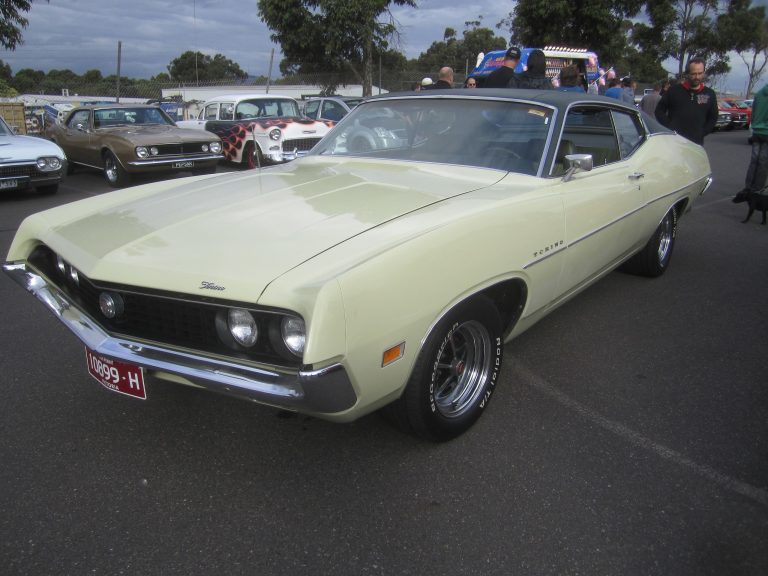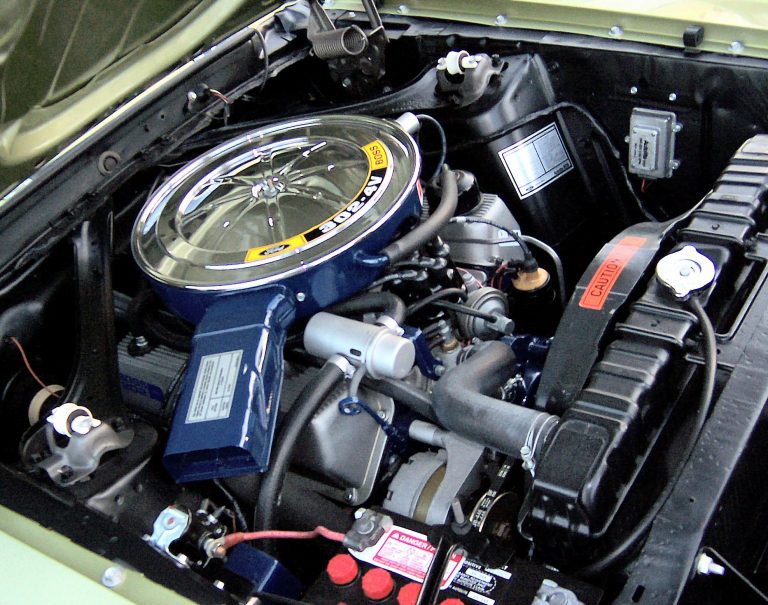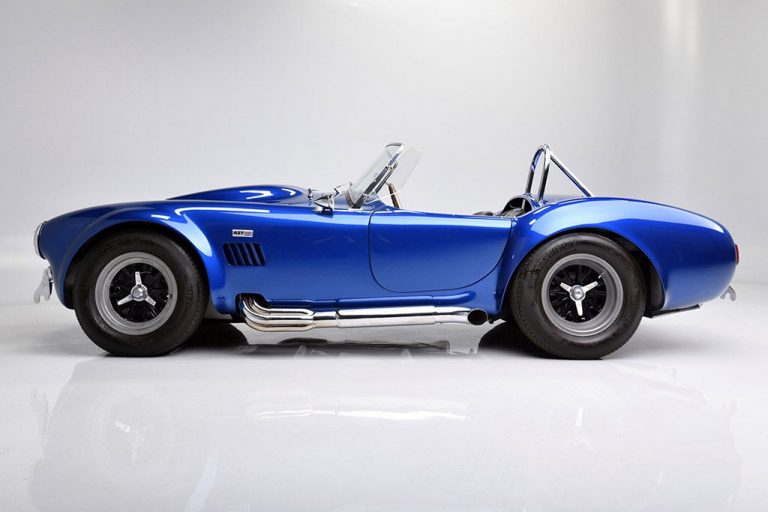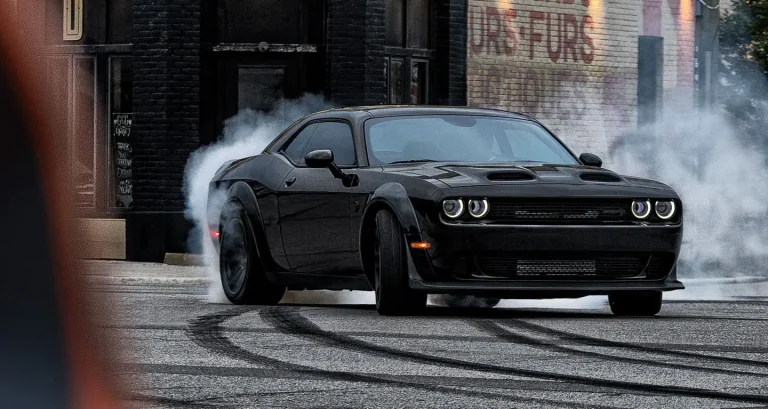Best Ford 289 Engine Upgrades

Meet Austin
Austin has been a muscle car enthusiast since an early age with his Dad having a collection including a 1965 Mustang, 1968 Mercury Cougar, and a 1969 Mustang Mach 1 among many others. Austin received a technical writing degree from University of Colorado Denver with the intentions of becoming an automotive journalist. His automotive knowledge, enthusiasm, and hands on experience allow him to craft detailed, accurate, and high-quality articles for the passionate Muscle Car Club audience.
The 289 is a staple of the muscle car era, appearing in many of Ford’s seminal models including the first generation Mustang, Fairlane, and, perhaps most importantly, the GT40. That isn’t even including the number of Shelby-specific applications as well. Helped immensely by its impressive legacy, the Ford small-block is one of the most famous engines of the era and a favorite for tinkerers and hot-rodders alike.
Naturally, modifications are a huge part of the 289 story, as there is a ton of untapped potential to be unleashed with the right parts. In this guide, we’ll cover the most popular modifications that you can make to your Ford 289 small block for peak performance.
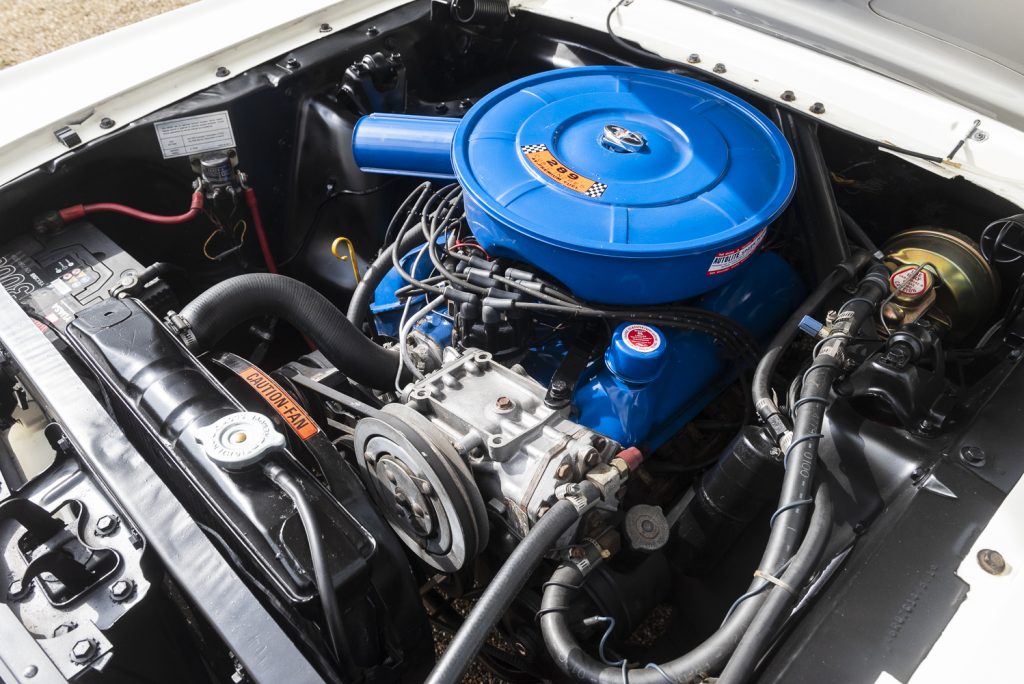
A Short 289 Overview and Considerations
Over the 289’s relatively short production run between 1963 and 1968, it was offered in a number of different variants destined for their own respective applications. Those variants included the D-Code, C-Code, A-Code, and HiPo/K-Code. It is important to know which variant of 289 you have, as it plays a role in how you modify your engine. While most modifications are universal on the 289, there are some key differences between the variants that might make some modifications more impactful on some engines compared to others.
For example, depending on the variant of 289 that you have, your engine might have come from the factory with either a 2-barrel or 4-barrel carburetor. A carb upgrade will provide performance benefits regardless of the engine that you have, but it will make a bigger performance difference on base 2-barrel models. There is also a noticeable difference in compression between 2-barrel and 4-barrel models, with the former ranging in compression from 8.7:1 to 9.3:1, while the four-barrel options ranged from 9.0:1 to 10.5:1. For that reason, 4-barrel 289s generally see better performance gains from naturally aspirated-focused mods.
Overall, the most important aspect of modifying your 289 is that all of the upgrades that you choose work together in harmony. Since most of the mods on this list change the power delivery characteristics of the engine individually, it is important to make sure that they are working with each other instead of against each other.
Upgraded Intake Manifold
- Noticeable increase in midrange power/tq
- Improved throttle response
- Very good horsepower per dollar ratio
- Simple installation
- Does not compromise drivability in any way
As with most engines, the key to more power on the 289 is better flow. The good news is that there are a ton of ways to increase overall flow on the 289 as the original design is pretty archaic. An upgraded intake manifold is undoubtedly one of the best ways to do that. Upgraded intake manifolds shift power and torque curves right, meaning that you’ll see noticeable gains in midrange power and torque, just what you want on the track or strip.
Improved intake flow also has the benefit of improving throttle response. That’s even more noticeable when paired with other complimentary upgrades like upgraded cylinder heads or a performance camshaft. It is crucial to match your intake manifold with those other modifications so that they work in unison with one another.
Since the 289 has been around for so long, there are a ton of intake manifold options for it. However, Edelbrock has a pretty tight stranglehold on the market. On lightly modified 289 engines, the options boil down to the Edelbrock Performer and the Edelbrock Performer RPM. While both are good options, most enthusiasts say that the Performer leaves a lot to be desired, as it is a tamer option that doesn’t significantly alter performance characteristics. The RPM is pretty much the universal winner, providing noticeable performance gains throughout the rev range and especially so in the higher RPMs.
Upgraded Cylinder Heads
- Better throttle response
- Increased mid-high RPM performance
- Increases to both horsepower and torque
- Relatively inexpensive way to get more performance
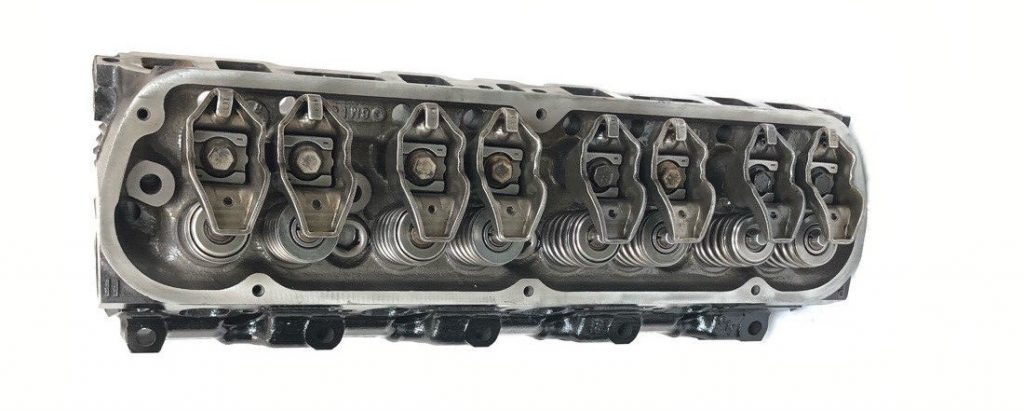
Upgraded cylinder heads are, by far, one of the most important and beneficial performance modifications that you can do to a 289 Windsor. One of the Ford small block’s primary limitations is airflow. While the factory heads aren’t terrible, engine technology really left them in the dust in the decades to come. It is very common practice for 289 enthusiasts to swap the factory heads with either newer, higher-flowing, factory heads from later engines, or port and polish the factory heads.
One of the most common options is swapping to either GT40 or GT40P heads from 90s 302 small-block-equipped cars. GT40 and GT40P cylinder heads came on 1993-1995 Mustang Cobras, 1996-Mid 1997 Ford Explorers & Mountaineers, and 1993-1995 Ford F-150 Lightnings. That made them pretty attainable and cheap to find, especially coming from Explorers. In combination with their availability, they are the highest-flowing 302 heads ever made by Ford, by a long shot.
While you’ll likely see impressive performance gains, there are a couple of downsides. Since the GT40/P heads have a notably larger combustion chamber than stock heads, you’ll lose some compression which is especially detrimental on low-compression 2-barrel carb 289 variants. They also change the spark plug angle, requiring aftermarket headers to work.
The other option is to have your factor 289 heads ported and polished, which is also a very popular choice. That will allow you to keep your compression while picking up more flow. In most cases, the cost is about the same as a set of GT40 heads and you won’t have to upgrade your headers. You can read more about this process in our Ford 289 Engine Guide.
Upgraded Carburetor
- Increased overall power and torque
- Improved fuel economy (in some cases)
- Better fuel system reliability
- Better performance from other associated modifications
As with most other modifications, the right carb choice for your 289 build is subjective. Ultimately, you’ll have to find a usable balance between power, reliability, fuel economy, and overall drivability. Carburetor sizing is one of the most important considerations that you’ll have to take into account. That is the aspect that will affect performance the most.
Quite a few people make the mistake of over-carbing their engine which can lead to performance issues unless you plan on heavily upgrading your engine along with the carb. For that reason, it is a good idea to stick to only as much as you need, which is around the 500-600 cfm mark on most street 289s. It is also important to pair an upgraded carburetor with the other performance modifications on the engine. There should be a symbiotic relationship between all performance parts, all working towards the same goal.
The world of carburetors is extremely in-depth and nuanced and can’t all be covered here. Since there is so much variety, it’ll likely take quite a bit of research to find the right one for your specific build. With that said, there are some go-to options for lightly/moderately modified 289s that have proven to be solid performers for most people. The Edelbrock Performer #1405 is a fan favorite for both its performance benefits and reliability and is probably the most popular upgraded 289 carb overall.
Performance Headers
- Increased performance
- Better exhaust sounds
- Improved performance from other modifications
This is unquestionably a Shelby-inspired 289 modification, as headers are one of the most important modifications that Mr. Shelby did to the 289 for the GT350. Headers have been a staple performance upgrade for V8 engines essentially since their creation. There’s no doubt that they benefit the 289 small block quite a bit as well. The factory 289 exhaust manifold is unquestionably restrictive, not to mention heavy. By eliminating the primary source of exhaust restriction right after the exhaust ports, headers allow your small block to breathe much easier. That translates directly to more power.
There are two primary options when it comes to 289 headers. You can either go the tri-Y (short tube) route or the mid-length/long tube route, each with their own benefits and shortcomings. Tri-Y headers are a common option on 289s as they are far easier to install and are generally less expensive. Long tube headers are significantly more difficult to install and more expensive, but they have significantly more performance potential than short tubes.
In addition to the power increase, headers can also change how your small-block Ford delivers its power as well. In comparison to the stock 289 exhaust manifold, long tube headers will increase mid-range and top-end performance. Tri-Y, or short tube headers, will improve low/mid-range performance but fall short high in the rev range. 1 ⅝” headers seem to be the most common choice on early model small-block Fords. That size is a good balance between added breathability and scavenging performance.
Upgraded Camshaft
- Massive power and torque gains
- Increased midrange/high-end performance
- Boost in performance from all other flow-related mods
- Lopey idle noises
Camshaft upgrades tend to be one of the most significant upgrades that you can do to a small block Ford. Swapping in a more aggressive cam has the potential to increase horsepower a little or a lot depending on how extreme you choose to go. While some performance cams with a milder grind may only yield 10-15 horsepower, a cam with aggressive lift and duration figures has the potential to net 50-75 additional ponies.
Choosing the right camshaft can be quite an involved process. When selecting an upgraded 289 cam, you’ll need to consider an array of other factors, primarily related to other modifications that you have done to your 289, the rear ratio, and transmission. The key to selecting a camshaft for a small-block Ford, or any vehicle for that matter, is to ensure that the cam works in unison with your other engine components.
You’ll also want to consider what type of camshaft to run. The 289 comes with a somewhat antiquated flat tappet mechanical camshaft. While that was the norm in 1964, most performance vehicles have since moved on to hydraulic roller cams at this point. Keep in mind, if you do settle on a hydraulic camshaft, you’ll likely need to upgrade some other components like the rocker arms.
In most cases, the best way to pick a cam is to contact a trusted cam manufacturer, provide the specs of your engine, and have them choose the best grind for your application. There’s little room for that to get messed up.

